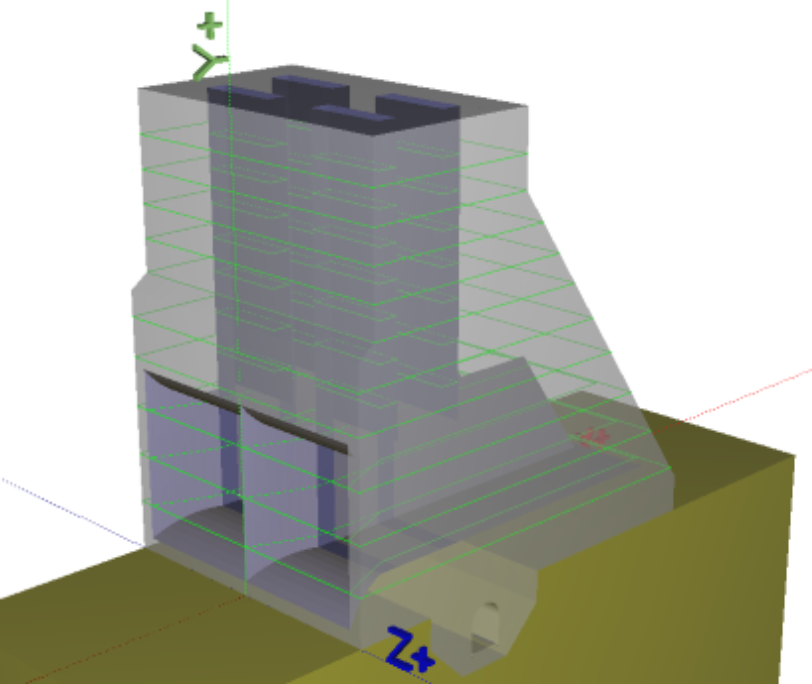

Sliding safety factors for the seismic case:
This graph presents the sliding safety factors for the seismic case as a function of the elevation of the structure for the two types of modeling presented above. Both methods give similar results while CADAM3D offers more conservative values except for the upper part of the structure. In addition, CADAM3D calculations required about 10 times less engineering time than the finite element method.
